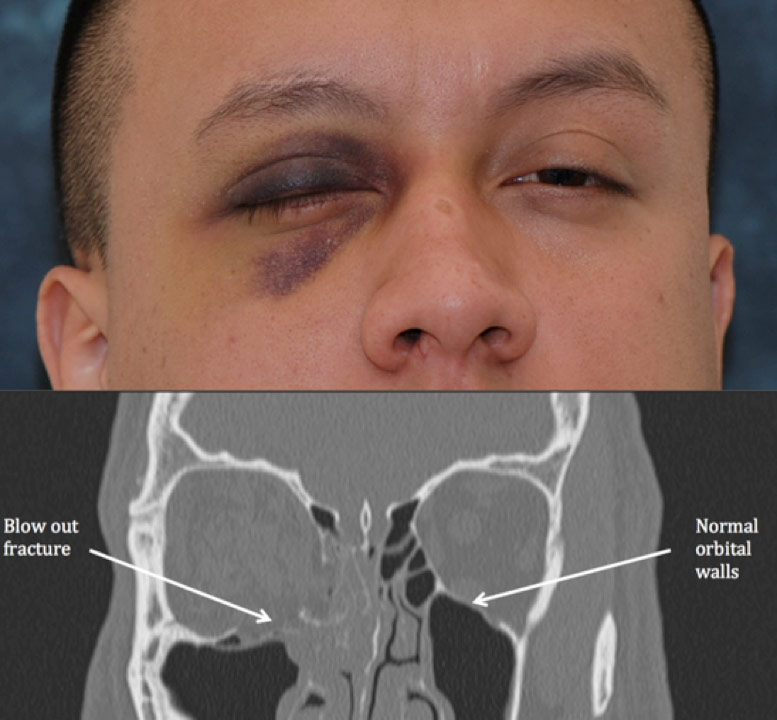The floor is likely to collapse because the bones of the roof and lateral walls are robust.
Orbital roof blow in fracture.
Most orbital roof fractures are blow in fractures displacement of the bone is towards the orbit.
An orbital blowout fracture is a traumatic deformity of the orbital floor or medial wall typically resulting from impact of a blunt object larger than the orbital aperture or eye socket most commonly the inferior orbital wall i e.
33 are associated with ocular trauma.
The isolated orbital roof blow up fracture also known as blow out fracture is defined as superior displacement of the fracture fragment into the anterior cranial fossa without involvement of the supraorbital rim with possible herniation of orbital contents outside of the orbital confines.
Pathology blow in fracture effectively reduces the volume of the orbit associated intraorbital injuries include extraocular muscle entrapment and.
Blow out fracture fracture of inferior or medial orbital walls with out fracture of orbital ridge.
A crack in the very thin bone that makes up these walls can pinch muscles and other structures around the eye keeping the eyeball from moving properly.
Isolated orbital roof fractures in adults are uncommon comprising 12 19 of all orbital wall fractures.
This is typically caused by a direct blow to the central orbit from a fist or ball.
Non blow out fracture lateral inferior and superior orbital ridge fracture typically occurs with other.
Another mechanism of injury is a blow in fracture where there is an inferiorly directed supraorbital force.
Orbital blowout fractures occur when there is a fracture of one of the walls of orbit but the orbital rim remains intact.
They are usually seen in patients with pneumatization of the orbital roof 1 5.
Adipose tissue inferior rectus or inferior oblique can entrap within maxillary or ethmoid sinus.
Clinical diagnosis is based on meticulous examination of the eye including patient vision and palpation of the orbital aperture.
Getting hit with a baseball or a fist often causes a blowout fracture.
Orbital blow in fractures occur when there is displacement of bone fragments towards the orbits.
Orbital blowout fracture or indirect orbital floor fracture.
Most roof fractures are associated with other orbital fractures and result from significant head trauma as a high degree of force is required to fracture this portion of the orbit.
Fractures may only involve the sinus the anterior.
Orbital roof fractures are more common in childhood as the frontal sinus has not yet pneumatised therefore all posterior force to the superior orbital rim is transferred to the anterior cranial base.
A blowout fracture is a break in the floor or inner wall of the orbit or eye socket.
The floor of the eye socket ruptures or cracks resulting in a small hole in the eye socket s floor which can trap some parts of the eye muscles and its surrounding.

